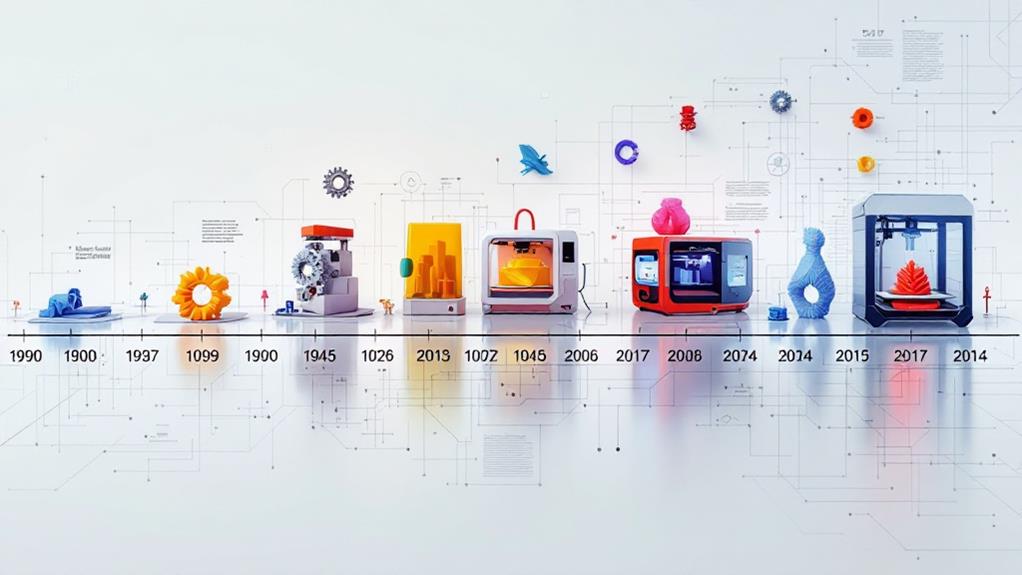A Brief History of the Development of Solar Power: Harnessing the Sun

You've likely wondered how solar power, a staple in the current renewable energy landscape, came to be. It all started with ancient civilizations designing structures to optimize or minimize sunlight. Fast forward to 1839, when Edmond Becquerel unveiled the photovoltaic effect, laying significant groundwork. By the 1950s, Bell Labs had developed the primary practical photovoltaic cell. As solar panels shifted from space exploration to home rooftops, they promised energy independence and reduced bills. With innovations like building-integrated photovoltaics and expanded government incentives, solar power continues to evolve. There's so much more to reveal about solar's remarkable expedition.
Ancient Solar Practices
Harnessing the sun's energy is far from a modern idea; ancient civilizations were the pioneers of solar practices. When you investigate the ingenuity of past cultures, you'll find that solar architecture played a key role in their daily lives. The Greeks, for instance, designed their homes to optimize sunlight during the winter months while minimizing heat during the summer. They strategically used south-facing windows, showcasing their understanding of solar positioning and thermal regulation.
The historical significance of these early solar practices can't be overstated. As you examine the past, you'll uncover that the Romans took solar architecture even further by incorporating glass in their windows to improve the greenhouse effect. This innovation allowed them to enjoy warm baths and comfortable homes, even when temperatures outside were less accommodating.
Early Scientific Discoveries
As the world moved beyond ancient solar practices, humanity's curiosity led to early scientific revelations that laid the groundwork for modern solar energy. You might find it fascinating that these findings, dating back to the 18th and 19th centuries, have shaped the way we harness the sun's power today. Scientists began to investigate how sunlight could be converted into usable energy, sparking a series of experiments and theories that would later evolve into significant advancements.
Let's examine some key milestones:
- 1767: Swiss scientist Horace-Bénédict de Saussure invented the solar collector, an insulated box that trapped solar heat, inspiring future innovations in solar technology.
- 1839: Edmond Becquerel, a French physicist, uncovered the photovoltaic effect, observing how certain materials could generate an electric current when exposed to sunlight.
- 1873: Willoughby Smith found that selenium's conductivity increased with light exposure, paving the way for more research on light-sensitive materials.
- 1876: William Grylls Adams and Richard Evans Day demonstrated that selenium could produce electricity when lit, marking an significant step toward practical solar energy use.
- 1891: Clarence Kemp patented the first commercial solar water heater, showing how solar energy could serve everyday needs.
These early scientific advancements set the stage for a future where solar energy would become a crucial resource.
The Photovoltaic Effect

Sunlight, a powerful force, has the ability to generate electricity through the photovoltaic effect, a phenomenon that has transformed how we tap into renewable energy. When sunlight strikes a material, it can excite electrons, causing them to move and create an electric current. This principle underlies the technology used in solar panels today. You might wonder how this revelation impacts everyday life. Well, it's at the heart of photovoltaic applications, where light is directly converted into electricity.
The process of energy conversion through the photovoltaic effect starts with solar cells, typically made from silicon. These cells absorb photons from sunlight, which then dislodge electrons. This movement of electrons generates an electric current, which can be harnessed for a range of uses. Imagine the convenience of powering homes, gadgets, or even remote areas where traditional electricity isn't feasible, all thanks to this innovation.
You can see the practicality of this effect in devices like solar calculators and large-scale solar farms. The beauty of photovoltaic applications lies in their ability to provide clean, sustainable energy with minimal environmental impact. As you investigate the world of solar power, the photovoltaic effect stands as a cornerstone of innovation, driving change in how we utilize the sun's energy.
Solar Energy in the 20th Century
The 20th century marked a significant period for solar energy as advancements took the technology from theoretical concepts to practical applications. You'd see a world beginning to recognize the potential of harnessing the sun's power. It wasn't just about the science anymore; it was about making solar energy viable for everyday use. During this time, several key developments occurred that propelled solar energy forward, laying the foundation for what it could become.
- Policy Changes: Governments around the world began implementing solar energy policies, encouraging research and development.
- Market Expansion: The solar market growth was evident as businesses and investors started seeing the potential in solar technology.
- Technological Innovations: New materials and methods were developed, enhancing the efficiency and affordability of solar energy.
- Research Funding: Increased investment in solar energy research led to breakthroughs that would shape future technologies.
- Public Awareness: More people became aware of solar energy's benefits, driving demand and supporting market expansion.
Birth of Solar Panels

Building on the momentum of the 20th century's advancements, the birth of solar panels marked a revolutionary step in making solar energy a tangible reality. You can trace this back to the 1950s when Bell Labs developed the initial practical photovoltaic (PV) cell. This innovation used silicon, a key solar panel material, which efficiently converted sunlight into electricity. Silicon's abundant availability and effective performance made it the cornerstone of solar panel materials.
As you explore further, you'll find that early solar panels were primarily used in space exploration, where reliable energy was essential. However, they soon found their way to Earth, paving the path for broader applications. With the growing interest in solar energy, researchers and engineers focused on refining installation techniques. By the 1970s, they had started developing methods for easier and more efficient installation. This involved creating modular panels that could be connected seamlessly, making solar installations more accessible.
When you think about it, these advancements formed the foundation for the solar industry we see today. By understanding the materials and techniques that shaped early solar panels, you appreciate the innovation and foresight that propelled solar energy into mainstream use.
Solar Power in Homes
Harnessing the power of the sun for residential use has transformed how we think about energy consumption. Home solar installations have become increasingly popular, offering a sustainable and cost-effective way to power your home. By installing solar panels, you can directly convert sunlight into electricity, reducing or even eliminating your dependence on the grid. This change not only benefits the environment but also translates to significant residential energy savings.
Consider these key advantages of solar power in homes:
- Cost Savings: Solar panels can drastically cut your electricity bills, sometimes to zero.
- Energy Independence: You gain more control over your energy sources and reduce reliance on external suppliers.
- Environmental Impact: Solar energy is clean and renewable, reducing your carbon footprint.
- Increased Home Value: Properties with solar installations often have higher market values.
- Tax Incentives: Many governments offer financial incentives and rebates for installing solar panels.
It's clear why more homeowners are opting for solar solutions. By adopting this technology, you're not just saving money—you're investing in a sustainable future. As technology advances and prices drop, it's becoming easier than ever to make the change. Adopt solar power today and enjoy the benefits for years to come.
Innovations in Solar Technology

Imagine a world where solar power is not only efficient but also seamlessly integrated into every aspect of our daily lives. Innovations in solar technology are paving the way for this vision to become a reality. You now have access to advanced solar thermal systems that capture sunlight and convert it into heat, which can be used for multiple applications like heating water or powering turbines for electricity generation. These systems are more efficient than ever, enabling you to harness the sun's energy even on cloudy days.
Concentrated solar power (CSP) is another groundbreaking technology you should be aware of. CSP uses mirrors or lenses to focus sunlight onto a small area, generating high temperatures that produce steam to drive turbines. This method offers high efficiency and the ability to store energy for use when the sun isn't shining, ensuring a reliable power supply.
Moreover, innovations like solar paint and transparent solar panels are pushing the boundaries of how you can incorporate solar technology into your environment. These advancements make it easier to integrate solar power into buildings, vehicles, and everyday objects, transforming how you generate and consume energy.
Solar Energy and Climate Change
Confronting the pressing challenge of climate change, solar energy emerges as a key solution in reducing carbon emissions and promoting sustainable development. By tapping into the sun's power, you contribute to climate change mitigation and help pave the way for a renewable energy shift. Solar energy policies play a significant role in this change, encouraging the adoption of green technology advancements and fostering energy independence.
Consider the tangible benefits of embracing solar power:
- Reduced environmental impacts: By decreasing reliance on fossil fuels, you minimize pollution and protect ecosystems.
- Economic advantages: Solar power economics offer long-term savings on energy bills and create jobs in the green technology sector.
- Increased energy security: Harnessing solar energy reduces dependence on foreign energy sources, leading to greater national resilience.
- Support for sustainable development: Solar initiatives align with global efforts to achieve sustainable and equitable growth.
- Adaptability: Solar systems can be tailored to suit different scales, from individual homes to large industrial plants.
As you engage with solar energy, you're not just investing in a cleaner future; you're actively participating in the fight against climate change. By understanding the environmental and economic impacts, you help drive a more sustainable and prosperous world.
Future of Solar Power

Amidst rapid technological advancements, the future of solar power looks incredibly promising. You're witnessing a shift where solar power trends are at the forefront of energy innovation. Efficiency improvements in photovoltaic cells and the proliferation of solar farms are transforming how we harness the sun's energy. These trends directly impact how homes, businesses, and even entire cities generate electricity, paving the way for a cleaner, more sustainable future.
Governments worldwide are recognizing the potential and are adapting renewable energy policies to support the growth of solar power. These policies include incentives like tax credits, subsidies, and mandates for solar installations. They're designed to make solar power more accessible and affordable for everyone. You'll notice that as these policies gain traction, the adoption rate of solar technology accelerates, driving down costs and making solar energy a viable option for more people.
Looking ahead, you'll find that continued advancements in energy storage solutions and smart grid technologies will further improve solar power's role. The future is bright, not just for reducing carbon footprints but also for achieving energy independence and resilience. Welcome these changes, and you'll be part of a cleaner, greener future.



